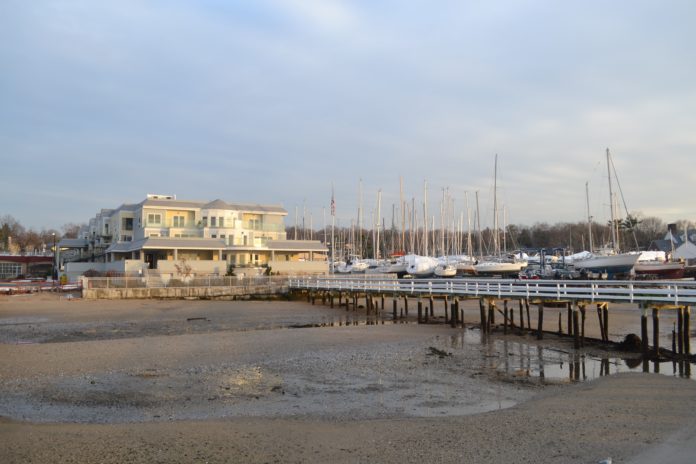The proposed changes to the town code affecting businesses on the Port Washington coastline will be presented to the North Hempstead Town Board on Oct. 22, Councilwoman Mariann Dalimonte said Tuesday night.
Conducted over Zoom with dozens of audience members watching from home, the meeting saw Dalimonte and town Planning Commissioner Michael Levine explain and take questions on the proposed changes. The changes would affect the designated waterfront business (BW) district, which covers the private commercial properties extending from Sunset Park to Manhasset Bay Yacht Club and the area south of the Town Dock.
Since 2017, a building moratorium has been in place in order for the Steering Committee, made up of representatives of numerous residential and business organizations, to discuss proposed changes to the town’s code.
After three years and six extensions, three of which took place during the COVID-19 pandemic, the moratorium was scheduled to end on Sept. 14, but was extended to further prepare code changes to be brought before the Town Board.
Dalimonte noted in the meeting’s opening minutes that the Steering Committee had “sacrificed many evenings away from their families and their personal lives to participate on the committee and to ensure that the proposed code preserves our precious waterfront and strikes an appropriate balance between the various interests involved.”
“Given all of the effort they have put into this process, I feel strongly that the community owes it to them to carefully examine the contents of the proposed code and to fairly evaluate its merits,” Dalimonte said.
In roughly six months of meetings, the councilwoman said, the committee came to a consensus on numerous code revisions.
The proposed code calls for parking requirements to increase from one parking stall per dwelling unit to two parking stalls; the allowable amount of impervious surfaces has been decreased by 10 percent, in an effort to improve stormwater management and flood mitigation; density has been capped at 20 units per acre for all types of residential housing; and 40 percent of all units in a residential structure are for seniors and the remaining 60 percent of the units are unrestricted, among other things.
At least 80 percent of dwelling units must be one-bedroom or studios, a change that Dalimonte attributed to “an effort to prevent excess or new school enrollments in our crowded school district.”
Building height will be a maximum of 35 feet to still allow three-story buildings, but now the area of the third floor is reduced to 50 percent of the second floor, which Dalimonte said was “an effort to help preserve views of the bay.”
Lot coverage has been reduced to 50 percent of lot size in what the councilwoman said was “an effort to preserve view corridors and open space.”
Front yard setbacks will be required for buildings taller than 20 feet, and a rear yard of 20 feet would now be required from the property line.
“This change will help preserve open space and water views and provide an area for developers to later construct a continuous walkway along the water should they choose to,” Dalimonte said.
The councilwoman invited those with any further comments to reach her at her office before the town council meeting, which will be live-streamed online on Oct. 22.



